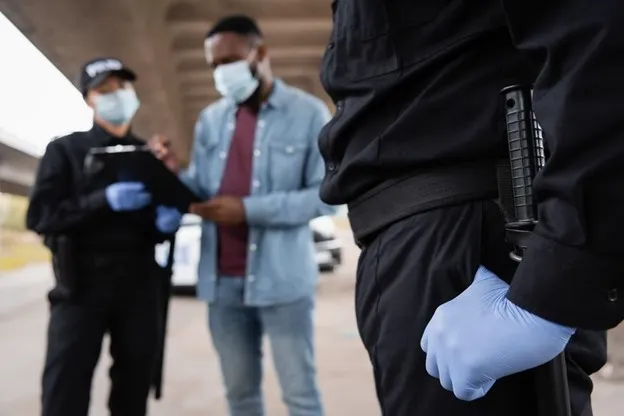Decoding Denver Weapon Crime Statistics

In an effort to understand the scope and nuances of weapon-related offenses, this article takes a deep dive into Denver’s weapon crime statistics, providing a detailed analysis of trends, demographic data, and law enforcement responses. We will explore the types of weapon crimes most prevalent in the area, the communities most affected, and the implications these statistics have for public safety and policy.
The piece aims to decode complex data and present it in a way that is accessible and informative, offering insights into how these numbers reflect broader societal issues and what measures are being taken to address them. It’s important to clarify that this article is intended for informational purposes only and does not constitute legal advice.
For those directly affected by weapon crimes or seeking specific guidance, consulting with legal professionals or law enforcement agencies is recommended. By examining and understanding Denver’s weapon crime statistics, we aim to contribute to informed community discussions and support efforts towards effective and comprehensive crime prevention and reduction strategies.
Key Factors Contributing to Weapon Offenses
Key factors contributing to weapon offenses in Denver can be analyzed by examining various socio-economic and demographic factors. Understanding these factors is crucial in developing effective strategies to address and prevent such crimes. The following are three key factors that contribute to weapon offenses in Denver:
- Poverty and unemployment rates: High poverty and unemployment rates are often associated with higher rates of weapon offenses. Limited access to education, resources, and opportunities can lead individuals to resort to criminal activities, including weapon-related offenses.
- Gang activity: Denver has experienced a significant increase in gang-related violence in recent years. Gangs often use weapons to assert dominance, protect their territories, and engage in criminal activities. The presence of gangs contributes to the overall weapon offenses in the city.
- Substance abuse and addiction: Substance abuse issues, particularly involving drugs and alcohol, are closely linked to weapon offenses. Individuals under the influence of substances may exhibit heightened aggression, impaired judgment, and an increased likelihood of engaging in violent behavior.
Analyzing Weapon Crime Trends in Denver
To understand the trends in weapon crime in Denver, it’s essential to look closely at various statistical data and identify emerging patterns. This analysis, often conducted by the Police Department, involves examining data collected over time to understand the nature and extent of weapon-related offenses in the city and create a solution to these challenges. Key to this analysis is determining the overall trend of weapon crime. Are such incidents, including violent crimes like non-fatal shootings and homicide arrests, increasing, decreasing, or remaining stable?
Another critical aspect is identifying the types of weapons commonly used in these crimes. While firearms are often the primary weapons involved, it’s important to determine if other dangerous weapons also play a significant role in these offenses. This data helps police officers and policymakers understand the levels of violence associated with different types of weapons.
Additionally, pinpointing the locations where weapon crimes most frequently occur can offer insights into which areas experience higher levels of criminal activity. This geographical analysis is crucial for the Police Department to allocate resources effectively and develop targeted strategies to reduce weapon crime.
By thoroughly analyzing these statistical details, including the types of weapons used, locations of crimes, and trends over time, law enforcement and policymakers in Denver can create more effective strategies to address and potentially reduce weapon crime in the city.
Understanding the Demographics of Weapon Offenders
To gain a comprehensive understanding of weapon offenders in Denver, it is essential to examine their demographics. By analyzing the demographic characteristics of these individuals, we can paint a clearer picture of who is most likely to be involved in weapon-related crimes in the city. Here are three key factors that contribute to the demographics of weapon offenders:
- Age: The age range of weapon offenders can vary widely, but studies have shown that a significant portion of these individuals fall within the young adult category, typically between the ages of 18 and 34.
- Gender: While both males and females can engage in weapon-related crimes, statistics indicate that the majority of offenders are male. This gender disparity underscores the need to address underlying societal factors that contribute to male involvement in weapon offenses.
- Socioeconomic status: Research suggests that weapon offenders often come from disadvantaged backgrounds, where poverty, unemployment, and lack of education may be prevalent. Understanding the socioeconomic context of these individuals can help inform targeted interventions and preventive measures to address weapon-related crimes effectively.

Effective Strategies for Combating Weapon Crime in Denver
Addressing weapon crime effectively involves implementing targeted intervention strategies. These strategies are particularly focused on individuals who are at a higher risk of involvement in weapon-related offenses, such as youth in gangs or individuals with histories of violent behavior.
Targeted interventions aim to provide support and resources that can steer these individuals away from criminal activities. This could involve offering education and employment opportunities, mentoring programs, and access to mental health services. Such initiatives are crucial in addressing underlying issues like domestic violence or past involvement in crimes that could lead to an increase in violence.
Community-based initiatives also play a vital role. These initiatives foster collaboration between law enforcement, including the police chief and crime lab, community organizations, and residents. This collaborative approach helps in creating a safer environment by strengthening community relationships and tackling the root causes of weapon crime.
In light of serious incidents like mass shootings, the role of agencies like the Justice Department becomes critical in guiding and supporting local strategies. Their involvement can enhance the effectiveness of intervention programs, especially in cases of life-threatening injuries or severe violence.
By adopting these targeted intervention strategies and fostering community collaboration, Denver can make significant progress in reducing weapon crime and enhancing the safety and well-being of its residents.
Conclusion
Analyzing weapon crime statistics in Denver reveals the scope and trends of such offenses, as well as the demographics of the offenders. Key factors contributing to weapon offenses need to be addressed in order to effectively combat this issue. By implementing strategies tailored to the specific needs of the community, law enforcement agencies can work towards reducing weapon crime and ensuring a safer environment for residents
